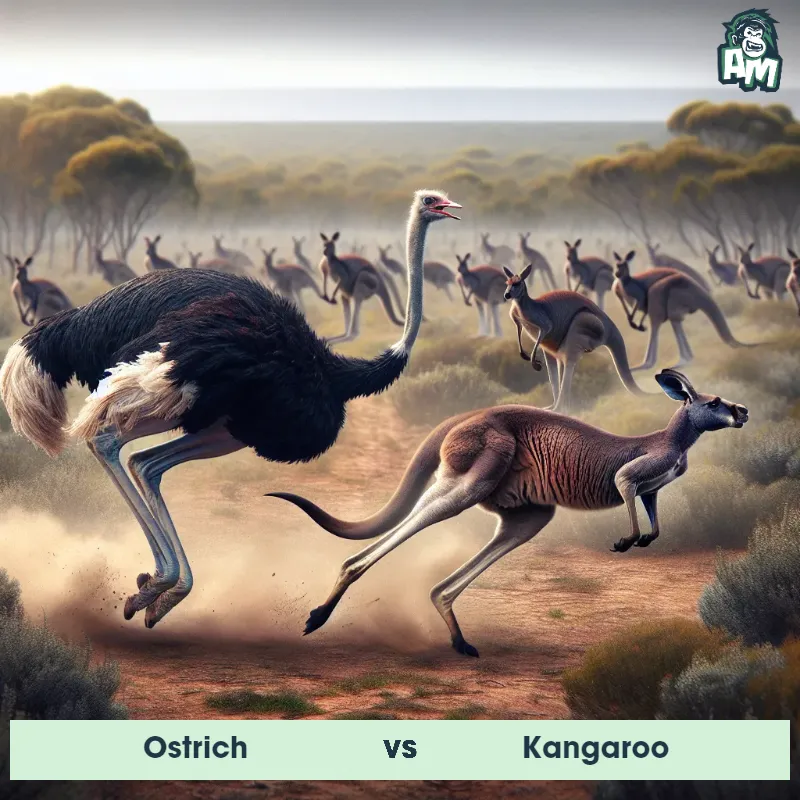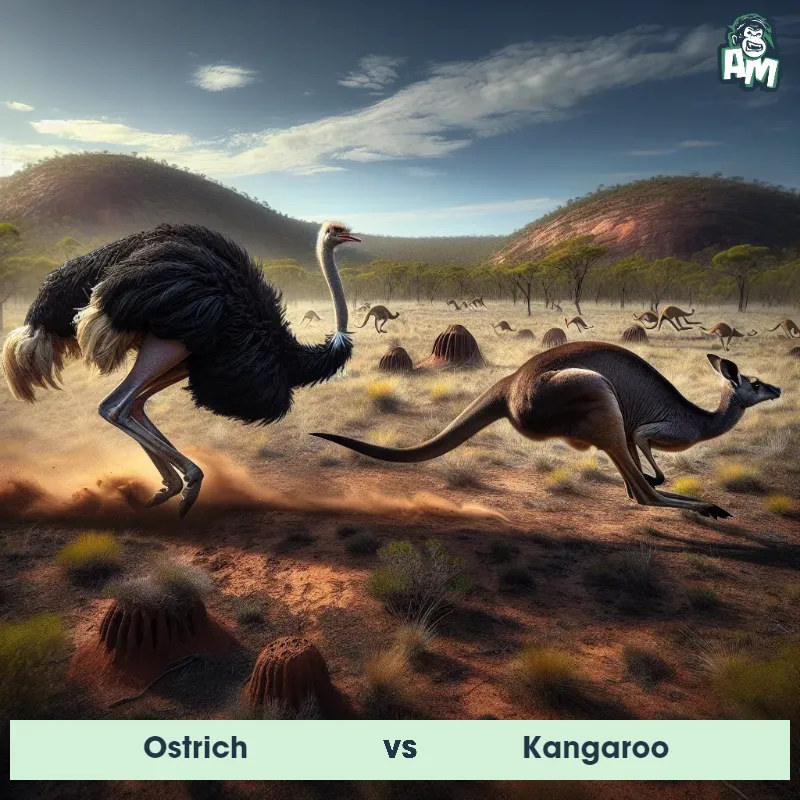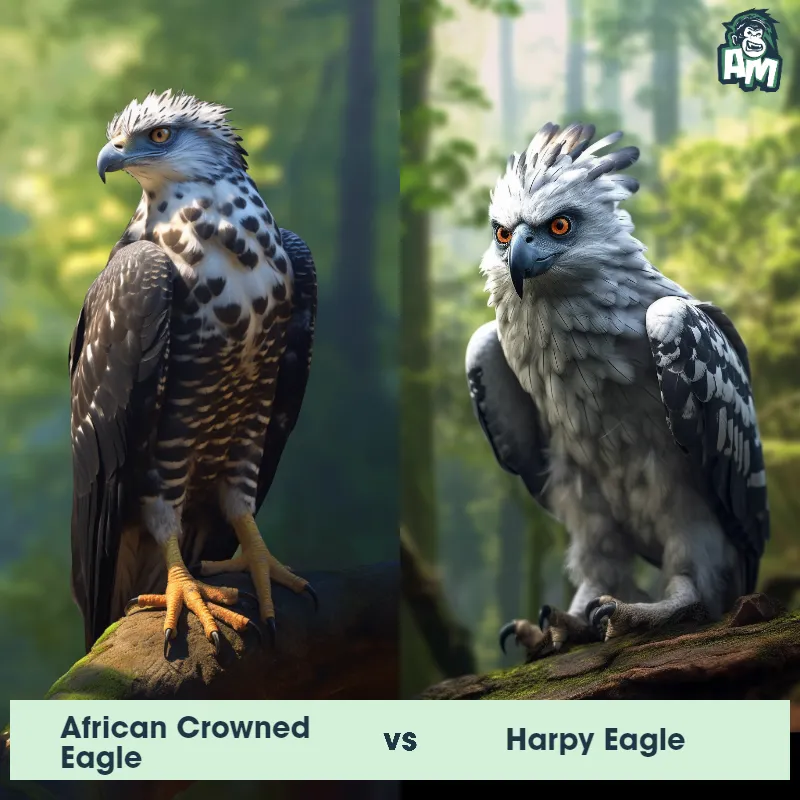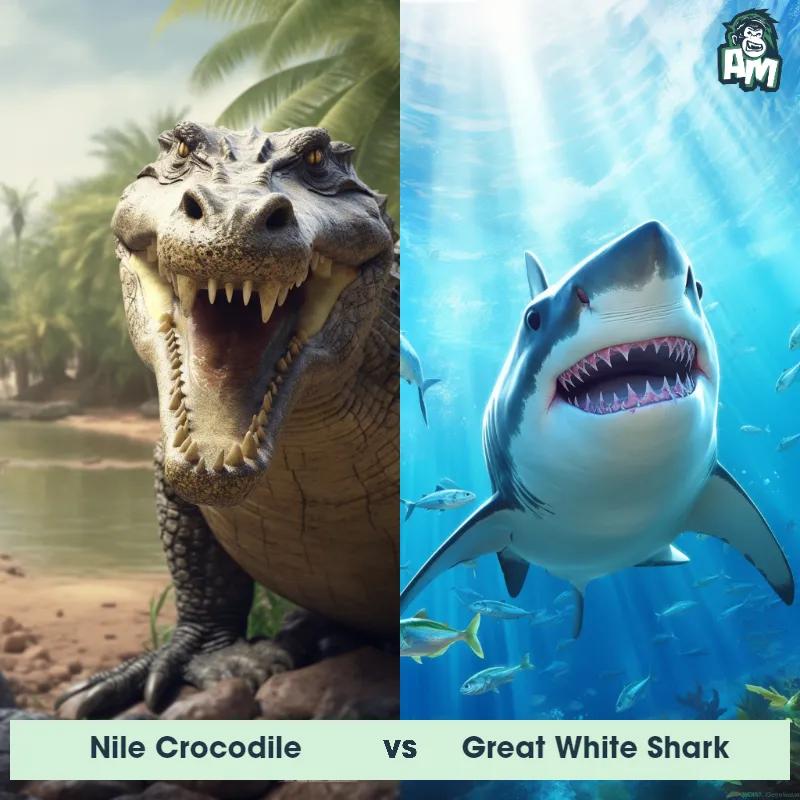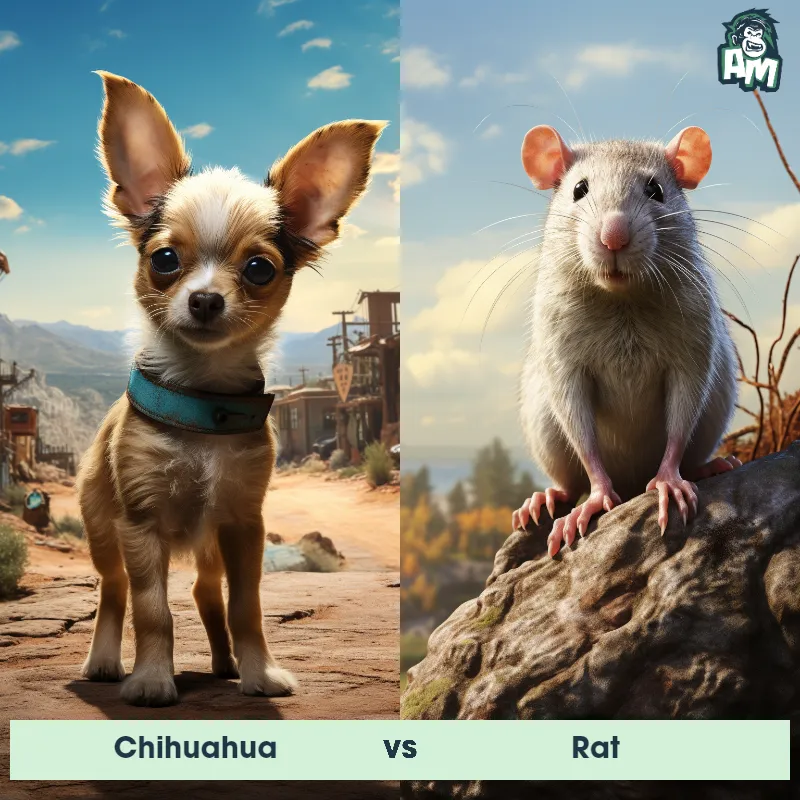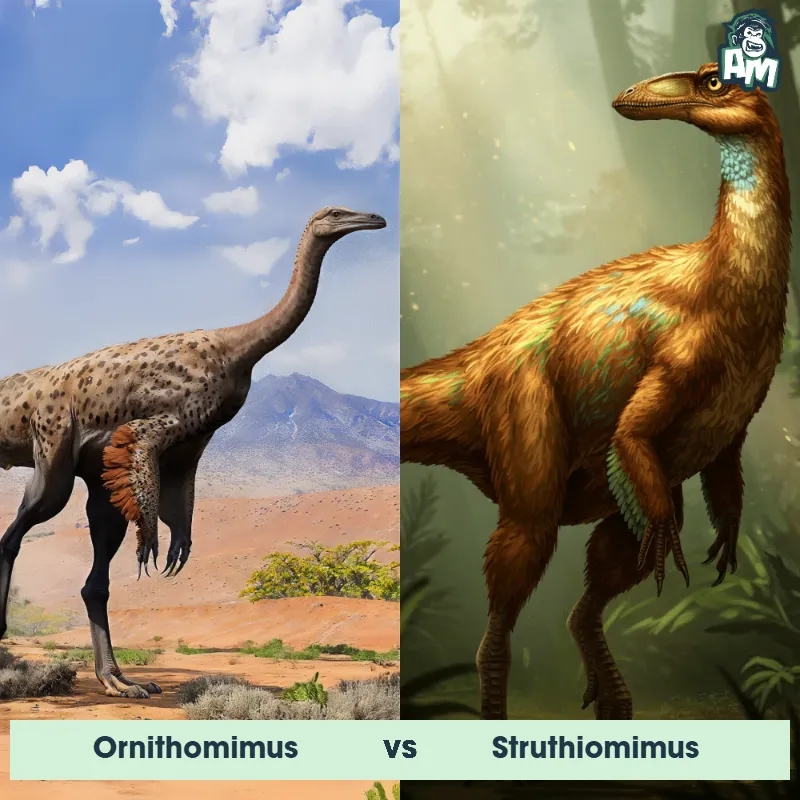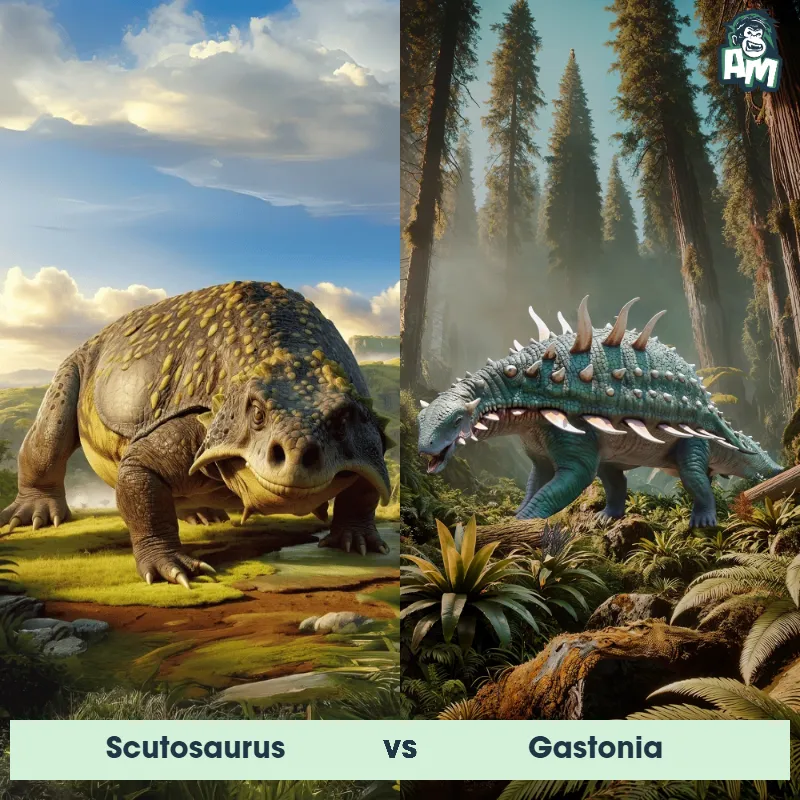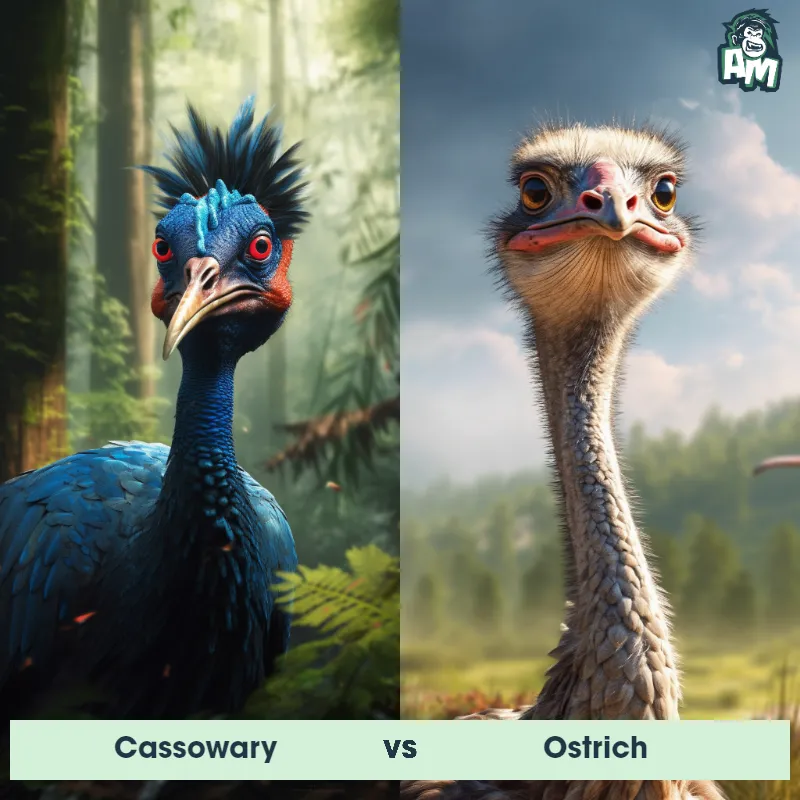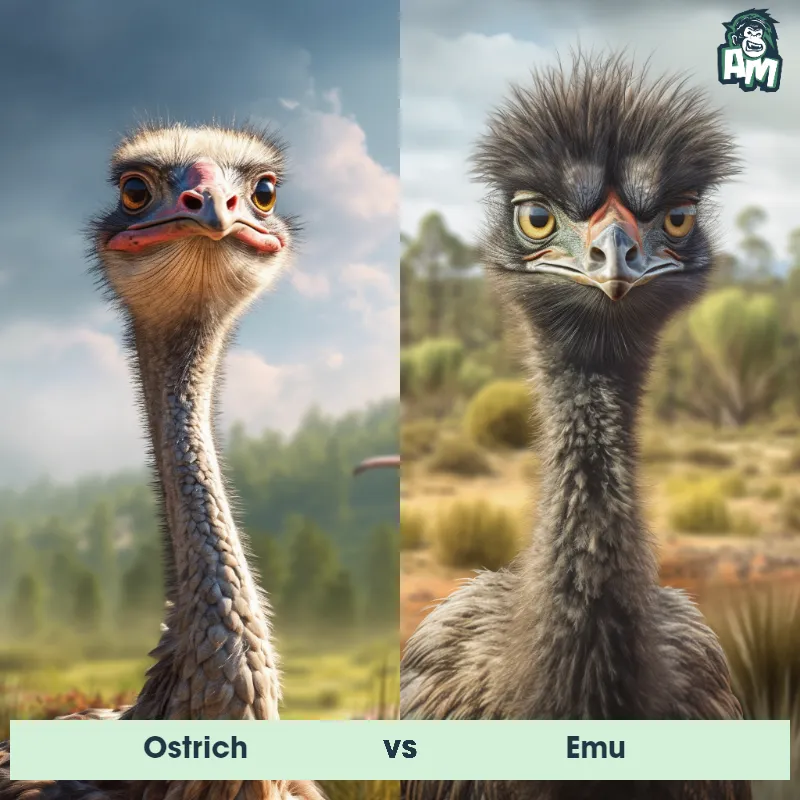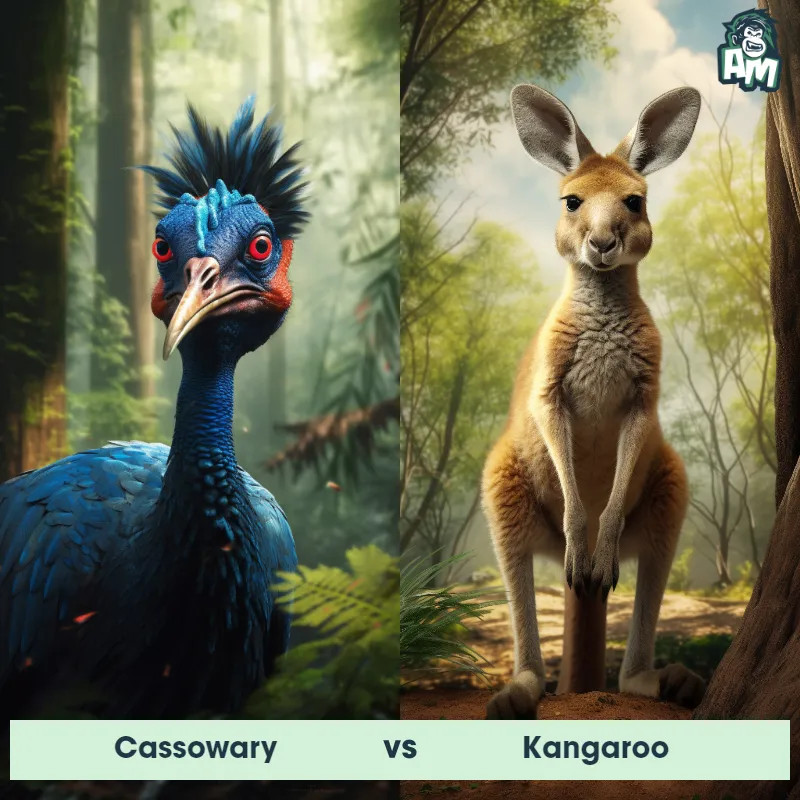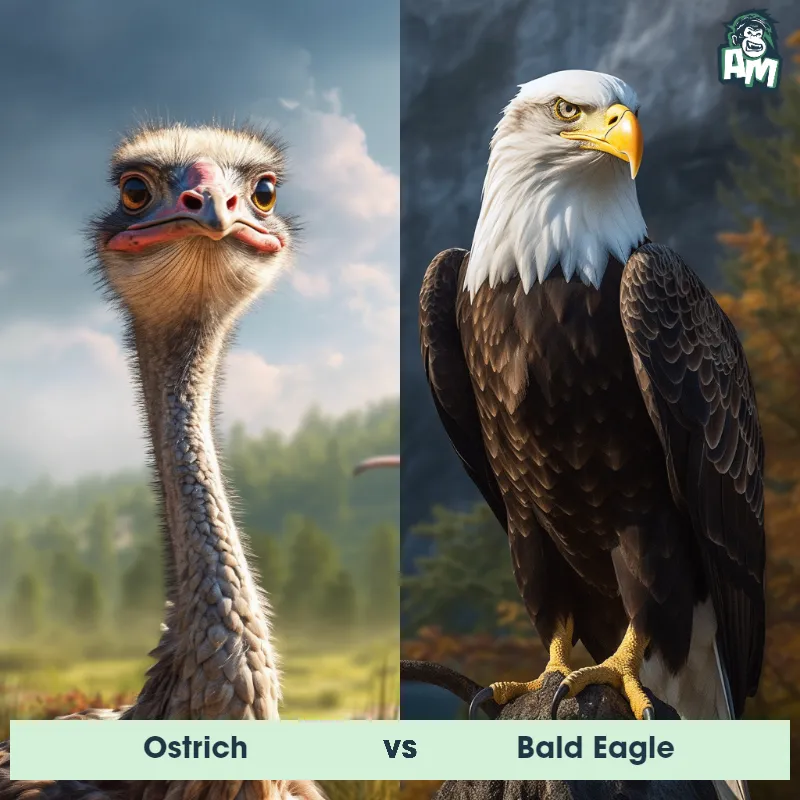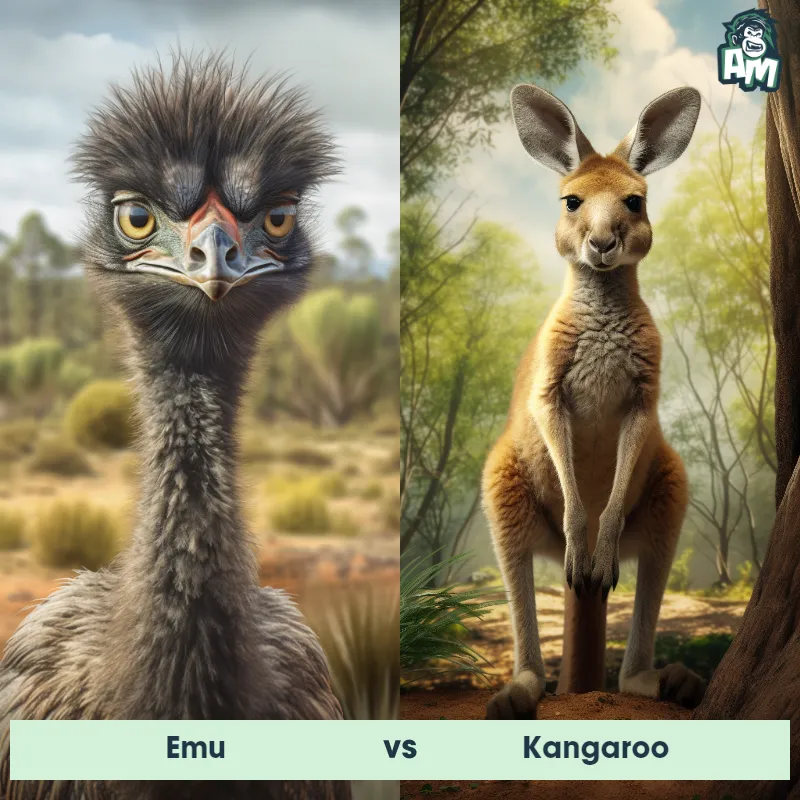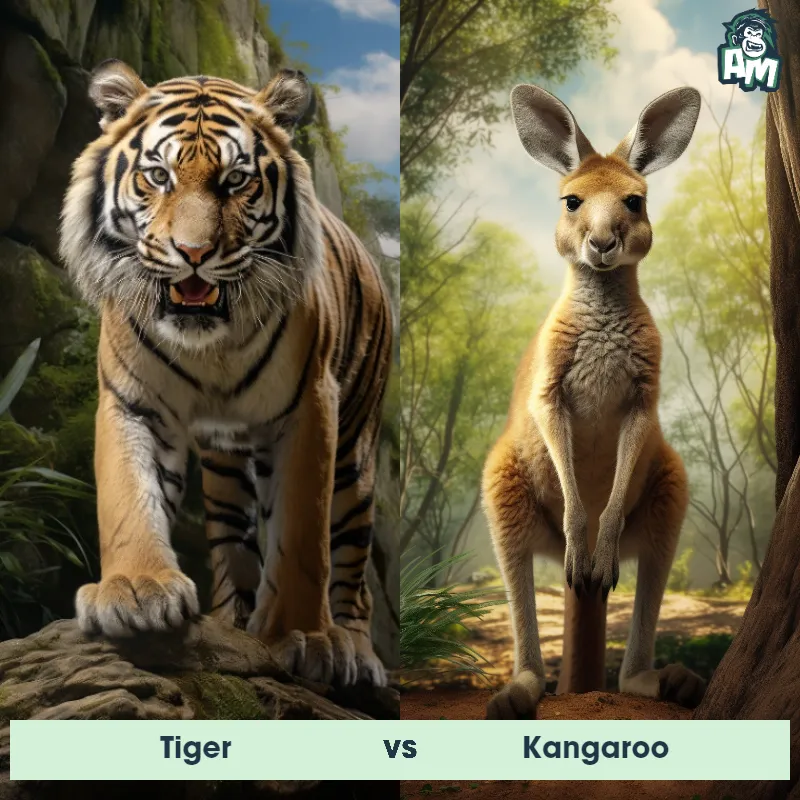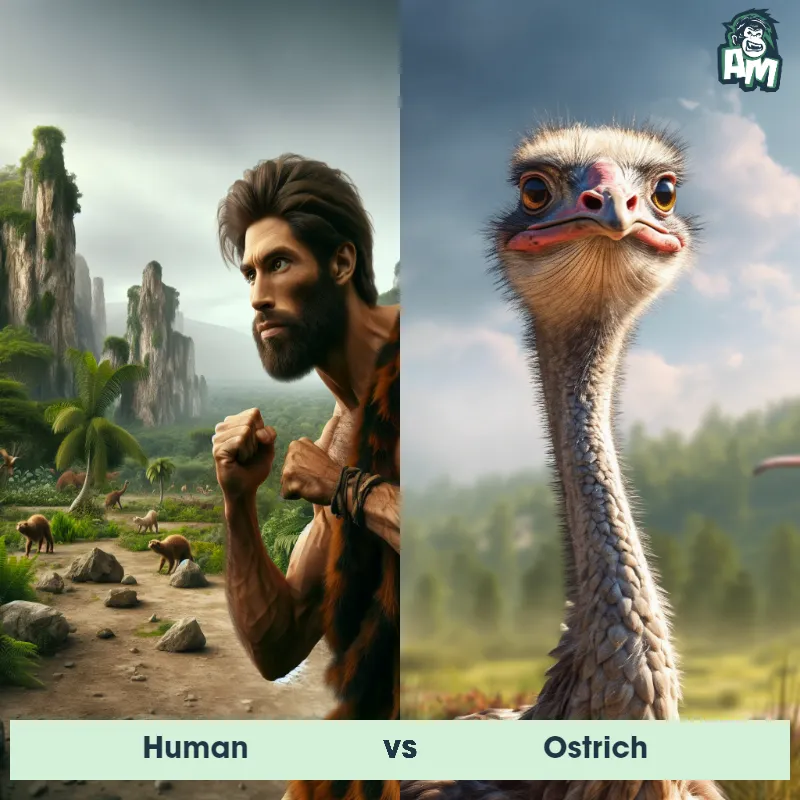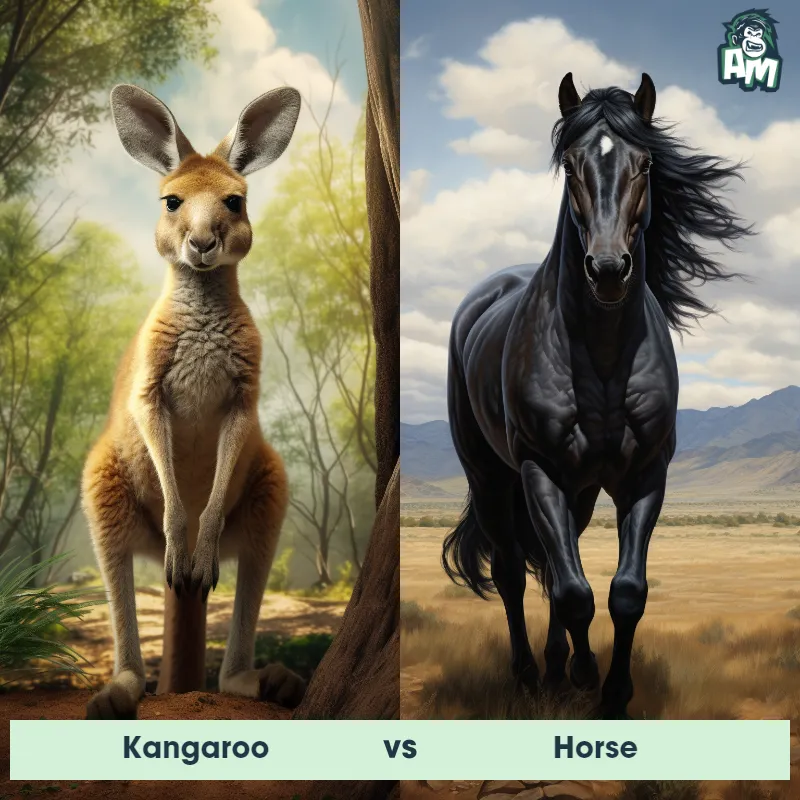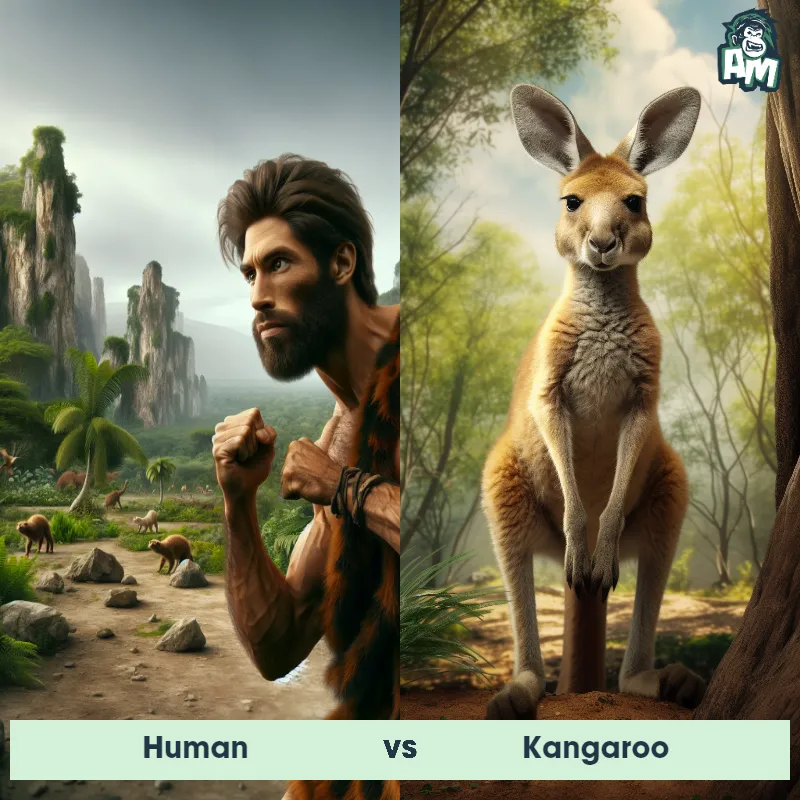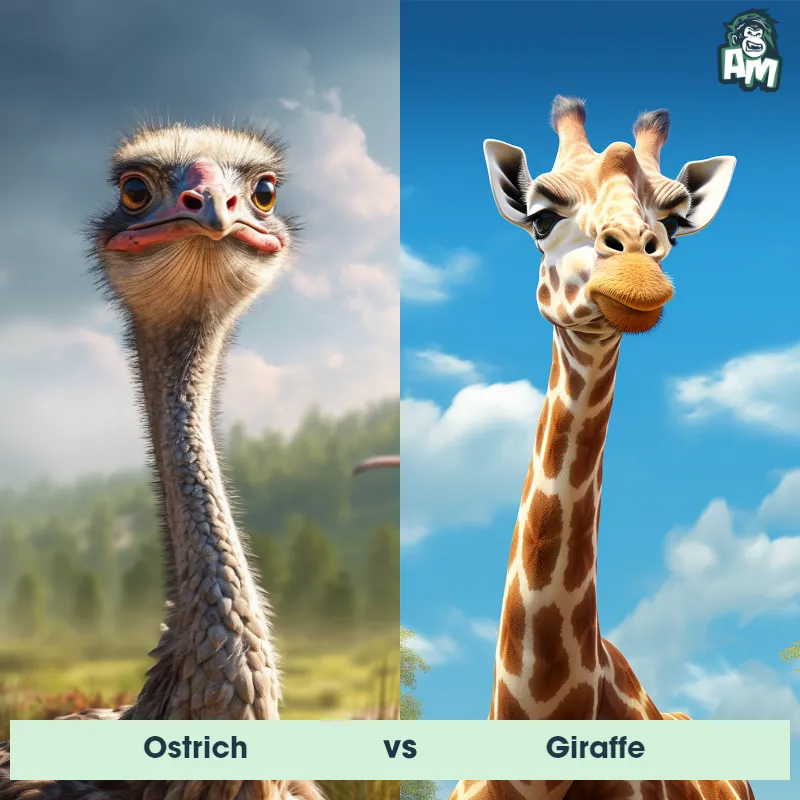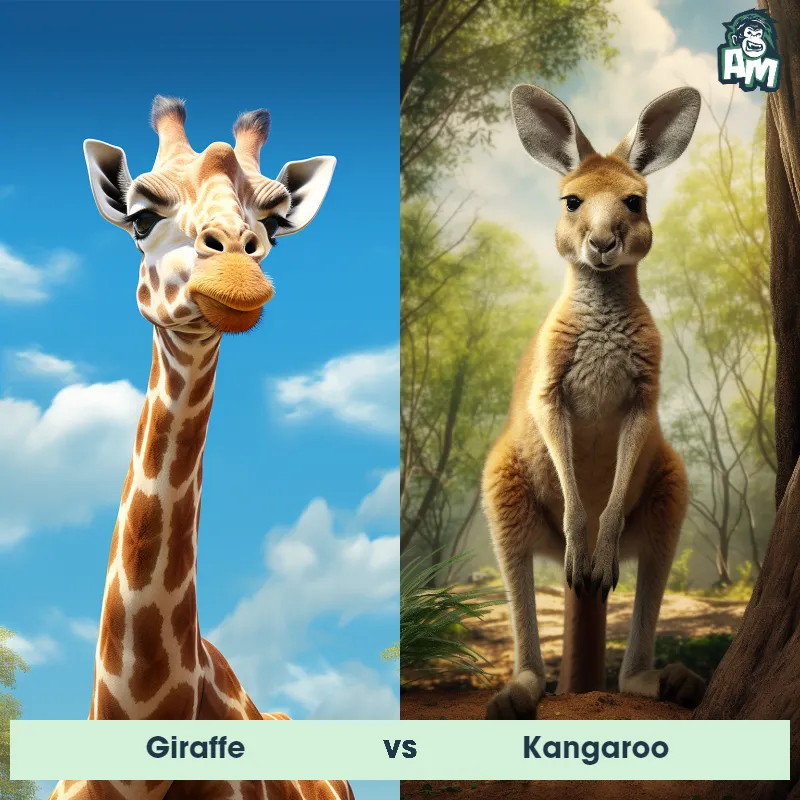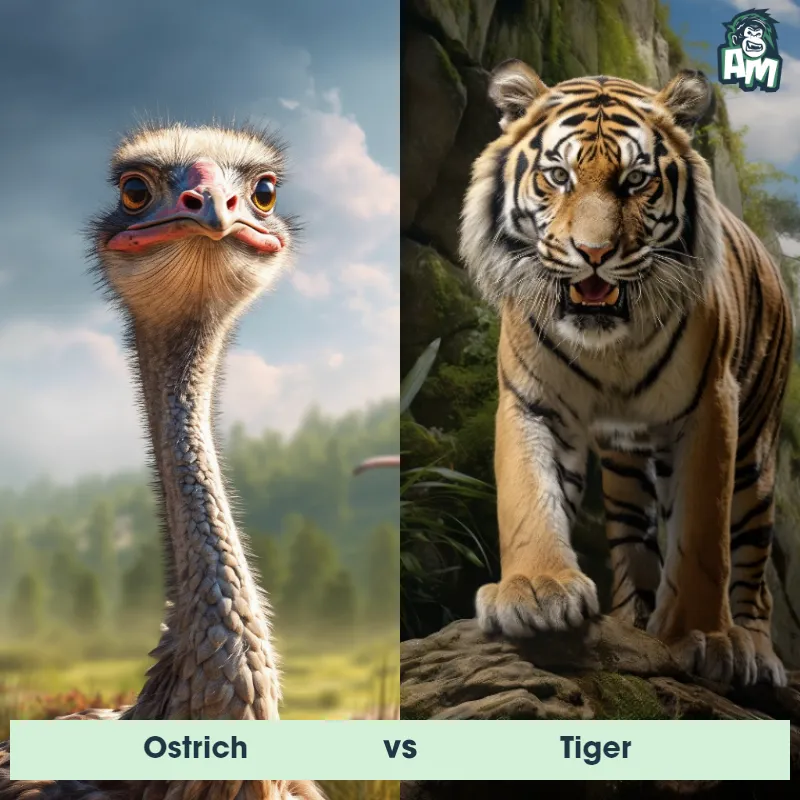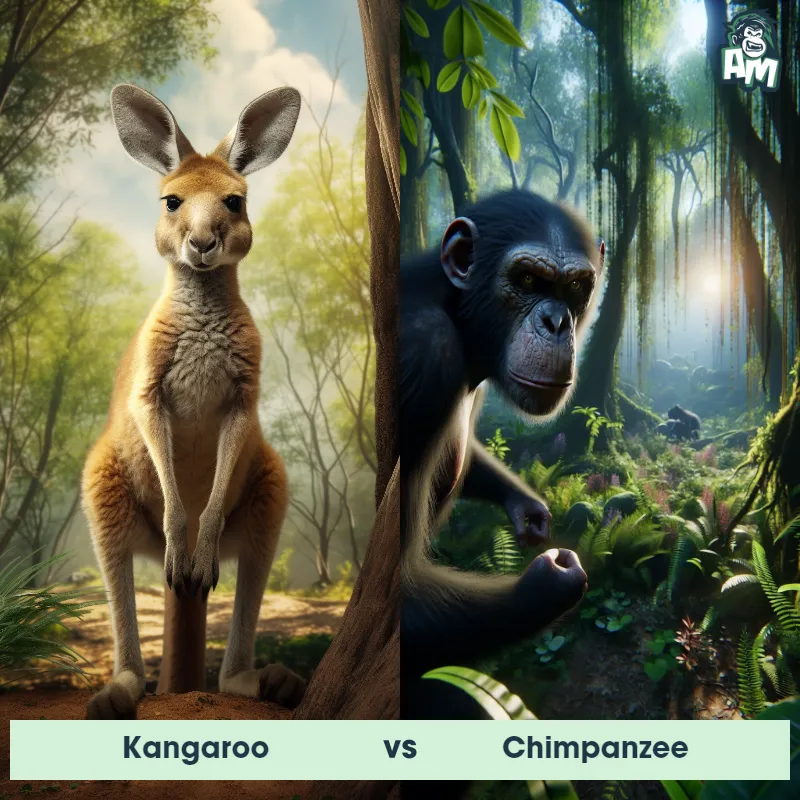Ostrich vs KangarooSee Who Wins

Ladies and gentlemen, welcome to this thrilling matchup between two incredible creatures of the wild. In the left corner, we have the swift and mighty Ostrich, known for its impressive speed and powerful kicks. And in the right corner, we have the Kangaroo, with its strong hind legs and lightning-fast reflexes. Get ready for a showdown like no other!
Contender 1: Ostrich
The Ostrich is the largest bird in the world, standing up to 9 feet tall and weighing up to 320 pounds. They have long, powerful legs that allow them to run up to 45 miles per hour, making them the fastest bird on land. Ostriches have a distinctive appearance with their long necks, small heads, and large eyes. They are flightless birds with wings that are used for balance and courtship displays. Ostriches are found in Africa and are known for their distinctive mating dance.
Fun Fact: Ostriches have the largest eyes of any land animal, measuring up to 2 inches in diameter, which is larger than their brain.
Contender 2: Kangaroo
The kangaroo is a large marsupial native to Australia, characterized by its strong hind legs, large feet, and a muscular tail used for balance. Their unique body structure allows them to hop at high speeds and leap large distances. Kangaroos have a small head, large ears, and a pouch for carrying their young, known as joeys. The color of their coat varies from grey to brown or red, depending on the species.
Fun Fact: Kangaroos are known for their unique method of locomotion; they can't walk on all four limbs, instead, they use hopping as their primary means of getting around, which allows them to cover great distances efficiently.
Matchup Stats
| Ostrich | Kangaroo | |
|---|---|---|
| Size | Up to 9 feet tall (2.7 meters) | 3-8 feet tall (0.9-2.4 meters) |
| Weight | Up to 320 pounds (145 kilograms) | 40-200 pounds (18-90 kilograms) |
| Speed | Speed: 43 mph (69 km/hr) | 44mph (70km/h) |
| Key Strength | Powerful legs for kicking | Powerful hind legs and strong tail for balance and kicking |
| Biggest Weakness | Flightless | Limited mobility when not hopping |
Current Votes
Ostrich vs Kangaroo
See Who Wins
Match Highlights
View More Matches
Looking For More?
Similar Matches
Scientific Stats
| Ostrich | Kangaroo | |
|---|---|---|
| Scientific Name | Struthio camelus | Macropus |
| Family | Struthionidae | Macropodidae |
| Habitat | Grasslands and savannas | Grasslands, forests, deserts, and suburban areas |
| Geography | Africa | Australia and New Guinea |
| Diet | Omnivorous, primarily plants and insects | Herbivore, primarily grasses and shrubs |
| Lifespan | 40 years - 50 years | 6 years - 8 years |
Key Differences between Ostrich and Kangaroo
- Body Shape: Ostriches have a distinctive shape, characterized by their long, slender necks, large bodies, and strong, muscular legs. Kangaroos, on the other hand, have a compact body structure with a stout tail, powerful hind legs, and shorter front limbs.
- Size: The Ostrich is notably larger than the Kangaroo, with adult Ostriches reaching heights of up to 9 feet (2.7 meters) and weighing around 220-350 pounds (100-160 kilograms), whereas Kangaroos typically stand around 3-6 feet (0.9-1.8 meters) tall and weigh between 30-200 pounds (14-90 kilograms).
- FEATHERS VS. FUR: Ostriches are covered in distinct, soft feathers that are typically brown or gray in color. Kangaroos, however, possess fur that varies in color depending on the species, ranging from reddish-brown and gray to lighter shades.
- HIND LEGS AND LOCOMOTION: Ostriches have exceptionally powerful and long hind legs, enabling them to run at high speeds reaching up to 40-45 miles per hour (64-72 kilometers per hour). Kangaroos, while also possessing strong hind legs, have adapted for jumping and hopping as their primary mode of locomotion.
- Tail AND Tail USE: Ostriches have short, fluffy tails that are often held upright during mating displays or when agitated. Kangaroos have a muscular, thick tail used for balance and support during hopping, as well as for propping themselves up while sitting or resting.
- HEAD AND BEAK: Ostriches have a small head with large eyes and a pointed, flat beak. In contrast, Kangaroos have a more elongated head with a narrower snout and a well-developed herbivorous dentition.



